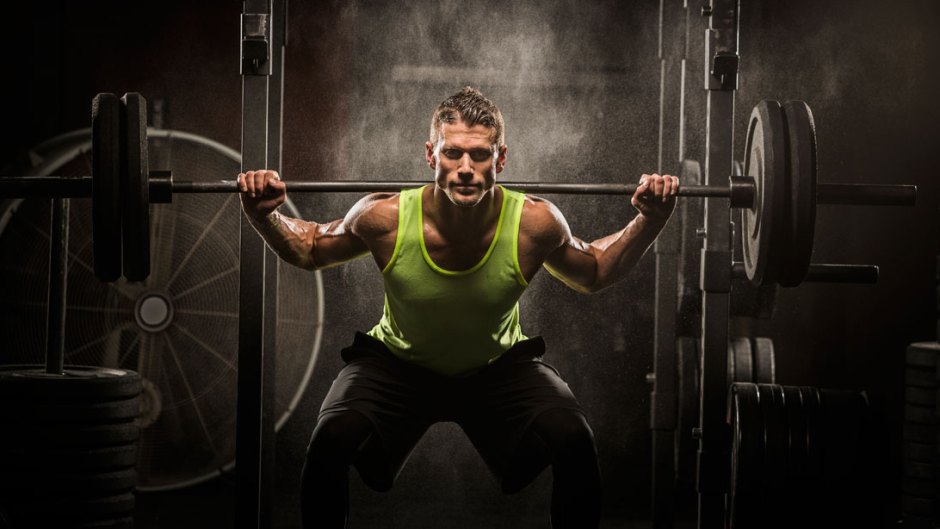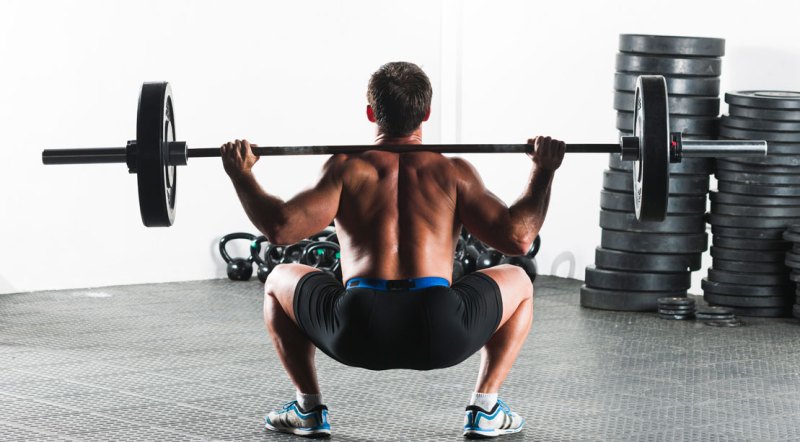
If you want to see great results in the gym, build more muscle and get ripped, the squat is a non-negotiable. A heavy barbell squat hammers almost every muscle in your body while stimulating a lot of growth and a massive hormonal response—over time, including squats in your workout will help you gain more size and strength overall.
Squats are often called “the king of exercises” not only for its physical benefits, but its hormonal advantages as well. Multiple studies have shown that heavy barbell squats help release testosterone and HGH in the body, both of which are necessary for muscle growth throughout your entire body—not just your legs.
Squats are also, arguably, one of the most functional exercises out there. Think about how much you squat throughout your everyday life: getting up and down from your bed and couch, sitting in your office chair, and more. If your leg muscles aren’t up to snuff, you’re going to fill the ramifications.
That said, you’ll be wasting your time if you make some of the most common squat mistakes around. Most of these mistakes are probably the reasons why many “don’t do squats” — you know, the people who say it’s bad for their knees or back.
But with any complex exercise, there’s a lot of room for error and the squat is no exception. Here are the top 10 mistakes people make with squatting, why they’re bad and exactly what you need to do to avoid them.
1 OF 10

Not Going Low Enough
Too many guys still squat above parallel. This reduces the strength and size you’ll build in your legs because it limits your range-of-motion and hurts your knees because the force of the barbell won’t shift onto your hips until you reach parallel.
Forget the myth that parallel squats are bad for your knees—it’s false. Researchers from Denmark also found that deep squats increased quad size and strength more than partial squats.
Instead, brace your core as you squat and make sure your thighs are parallel to the ground (or lower) at the bottom. If you can’t get down that low, improve your hip mobility or use an easier squat variation like the Goblet Squat or Zercher Squat to keep your torso upright and let you squat lower.
2 OF 10

Collapsing Your Knees In
Never let your knees collapse inward as you squat. That’ll stress your knees and damage the ligaments.
Instead, always point your knees in the same direction as your toes. If your knees still drift together, place a mini-band around your knees to force your legs to fight against the resistance and activate the correct muscles to keep your knees in alignment.
3 OF 10

Lifting Your Heels
Often, guys will lift their heels as they descend. This shifts the weight forward, increases the difficulty, and stresses your knees. Instead, drive through your heels. For a quick fix, curl your toes upward when squatting to force you to use your heels. Also, add more ankle mobility exercises to your warmup because rising heels could signal tight ankles.
4 OF 10

Using the Same Squat Variation
Instead of doing only one type of squat, cycle through the dozens of variations to target different muscles and avoid plateaus.
For example, switch your back squats with goblet squats for a few weeks to improve your core activation, strengthen your quads and reduce the stress on your lower back. To increase your squat poundage, switch to Anderson Squats to develop your drive from the bottom and build pure strength.
5 OF 10

Not Using the Safety Bars
If you squat in a power rack, always use the safety bars. Set them to a height just below where the barbell would be when you reach the bottom of your squat. (If you set them too high, you’ll slam your barbell on the safety bars with every rep.) That way, when you get too fatigued, you can set the bar on the safety bars and exit from underneath.
6 OF 10

Rounding Your Lower Back
Always maintain a flat, neutral spine when squatting. If you round your lower back, you’ll put dangerous stress on your lumbar spine. In the squat community, this is called a “butt-wink” because, as you descend towards parallel, your butt tucks underneath and your lower back rounds.
Do NOT arch your lower back harder to combat the butt wink. (I made that same mistake for years.) Instead, unrack the bar, get into your stance, take a deep breath, and exhale as hard as you can. You’ll feel your ribcage drop and your pelvis point tilt upward. Now squat while maintaining this new ribcage and pelvic position; you’ll fire your entire core and relieve the pressure on your back.
7 OF 10

Not Using Your Glutes
Your glutes are the strongest muscle in your lower body. Use them when you squat.
As you drive from the bottom, imagine spreading the ground apart with your feet to activate your glutes and increase your strength. At the finish, squeeze your glutes to completely extend your hips.
8 OF 10

Raising Your Hips Too Fast
From the bottom, many guys will lift their hips faster than their shoulders. This move looks like a Good Morning and can stress your lumbar spine as you extend with your lower back. Instead, raise your hips and shoulders at the same time.
9 OF 10

Using the Squat Pad
Just avoid it. It eliminates your feel for the barbell, elevates the barbell, and prevents your upper-traps from withstanding heavier weights. (It also makes you look like a wimp.)
People have set world records with nothing but the bar on their back; if they can do it, so can you.
10 OF 10

Using the Smith Machine
Never squat in the Smith Machine. It fixes you into a two-dimensional plane and unnatural movement patterns. It also stabilizes the weight, preventing you from getting the full benefits of the squat. One of the reasons why we squat is to force ourselves to stabilize the weight.
You also shortchange yourself. Researchers from Canada found an average of 43% more muscular activation with the free-weight squat than a Smith-machine squat.
Hey, I’ll take the extra 43% any day.


